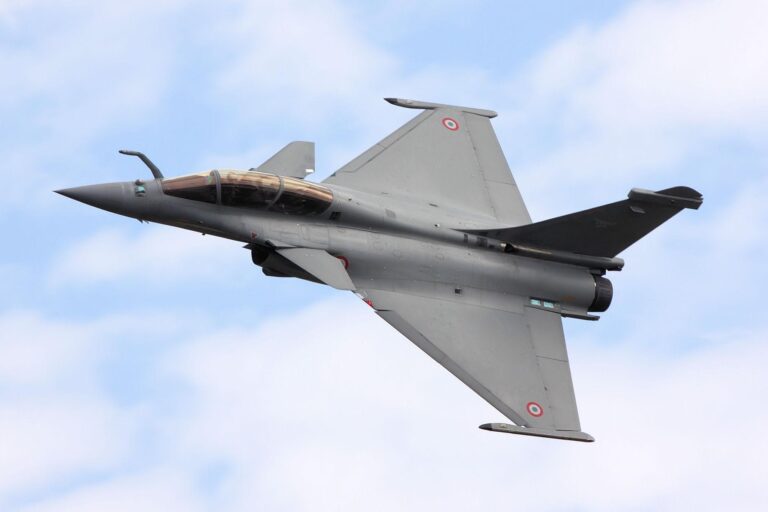France’s aerospace giant Dassault Aviation has sent a clear message to Germany regarding the development of next-generation fighter jets. In a statement reported by Reuters, Dassault emphasized its capability to independently design and manufacture cutting-edge combat aircraft without relying on German collaboration. This announcement comes amid ongoing discussions about the future of European defense projects and highlights emerging tensions within the continent’s military-industrial partnerships.
Dassault Signals Independent Fighter Jet Development Amid Franco-German Cooperation Challenges
Dassault Aviation has openly declared its readiness to pursue the development of a next-generation fighter jet independently, signaling a significant shift in the European defense landscape. The announcement follows ongoing difficulties in aligning priorities and technological approaches with German partners under the Franco-German fighter program. Despite longstanding ambitions for a joint project intended to replace legacy fleets in both countries, Dassault emphasized its confidence in national capabilities and the importance of meeting France’s strategic timelines without compromise.
The company highlighted several key factors underscoring its decision:
- Technological sovereignty: Mitigating risks associated with divergent development pathways and safeguarding intellectual property.
- Strategic autonomy: Ensuring uninterrupted progress aligned with French defense policies and operational needs.
- Program schedule assurance: Avoiding delays caused by intergovernmental coordination challenges.
A comparative overview of the fighter jet efforts further illustrates the contrasting approaches:
| Aspect | Franco-German Joint Development | Dassault Independent Effort |
|---|---|---|
| Project Timeline | Uncertain, with extended negotiations | Defined and aggressive schedule |
| Technical Leadership | Divided between partners | Dassault retains full control |
| Risk Management | Shared but complex | Centralized and streamlined |
| Funding Agreement | Subject to political agreements | Primarily sovereign funded |
Implications for European Defense Collaboration and Future Military Procurement
Dassault’s declaration signals a potential recalibration in the dynamics of European defense collaboration, particularly between France and Germany. This statement may prompt Germany to reassess its strategy toward independent development or partnerships in future fighter jet programs, potentially leading to a diversification of procurement approaches across the continent. Countries might increasingly prioritize national sovereignty and technological autonomy over joint ventures, which traditionally promised cost-sharing and interoperability. Such a shift could result in more fragmented development timelines and varied operational capabilities among European allies.
From a procurement perspective, this development introduces both challenges and opportunities for European defense industries. Key implications include:
- Increased competition: Multiple projects running in parallel may accelerate innovation but strain budgets.
- Budgetary pressures: Countries may face higher costs as economies of scale diminish.
- Industrial fragmentation: Divided efforts could complicate supply chains and alliance interoperability.
- Enhanced strategic autonomy: Nations gain greater control over design choices and deployment timelines.
| Aspect | Potential Impact |
|---|---|
| Collaborative Projects | Possibility of reduced joint initiatives |
| Innovation Pace | Acceleration due to competition |
| Defense Budgets | Increased expenditure per nation |
| Military Interoperability | Risk of diverging systems |
Analyzing Germany’s Strategic Options in Response to Dassault’s Stance
Germany now finds itself at a crossroads, forced to reassess its defense procurement strategy in light of Dassault’s firm stance on progressing its fighter jet program independently. The French manufacturer’s declaration not only signals a shift in traditional European defense collaboration but also compels Berlin to explore alternative pathways to maintain its air combat capabilities. Among the strategic options on the table are:
- Partnering with alternative European defense contractors to spearhead joint development efforts.
- Accelerating domestic aerospace research to reduce reliance on foreign manufacturers.
- Increasing investment in unmanned aerial systems as a complementary or alternative solution.
- Reevaluating NATO-based procurement deals to leverage broader alliance capabilities.
To better visualize the potential approaches, the following table highlights key benefits and challenges associated with each option, helping German policymakers prioritize effective responses:
| Strategic Option | Advantages | Challenges |
|---|---|---|
| Alternative European Partnerships | Shared costs, technology exchange | Coordination complexity, longer timelines |
| Domestic Aerospace Development | Sovereignty, tailored capabilities | High investment, technological hurdles |
| Unmanned Aerial Systems | Cost-effective, rapid deployment | Limited combat roles, integration issues |
| NATO Procurement Deals | Alliance interoperability, streamlined purchasing | Reduced national control, political dependencies |
Recommendations for Strengthening Franco-German Aerospace Partnership and Joint Innovation
To reinvigorate the Franco-German aerospace collaboration, both nations should emphasize transparent communication channels and rigorous joint project management frameworks. Establishing a clear roadmap with shared milestones will mitigate risks of unilateral developments like Dassault’s recent announcement. Encouraging mutual investments in cutting-edge technologies such as artificial intelligence, advanced propulsion, and stealth materials will also foster deeper integration of expertise and resources.
Key strategic actions include:
- Launching co-funded innovation hubs focused on next-generation fighter jet technologies
- Creating bilateral task forces to oversee compliance with shared defense and export controls
- Implementing regular governmental and industrial stakeholder summits to align priorities
- Enhancing joint research and development initiatives leveraging EU aerospace programs
| Recommendation | Expected Impact |
|---|---|
| Joint Innovation Hubs | Accelerated tech development and shared IP |
| Bilateral Task Forces | Improved project oversight and compliance |
| Regular Stakeholder Summits | Aligned strategic goals and reduced misunderstandings |
| EU R&D Programs Collaboration | Access to broader funding and expertise |
Wrapping Up
As the debate over Europe’s future defense capabilities intensifies, Dassault’s assertion underscores the growing complexities in transnational military collaborations. While Germany pursues its own fighter development ambitions, France’s confidence in independently advancing its next-generation aircraft highlights divergent strategic priorities within the continent. How this dynamic will shape the trajectory of European defense cooperation remains a key question for policymakers and industry stakeholders alike.




